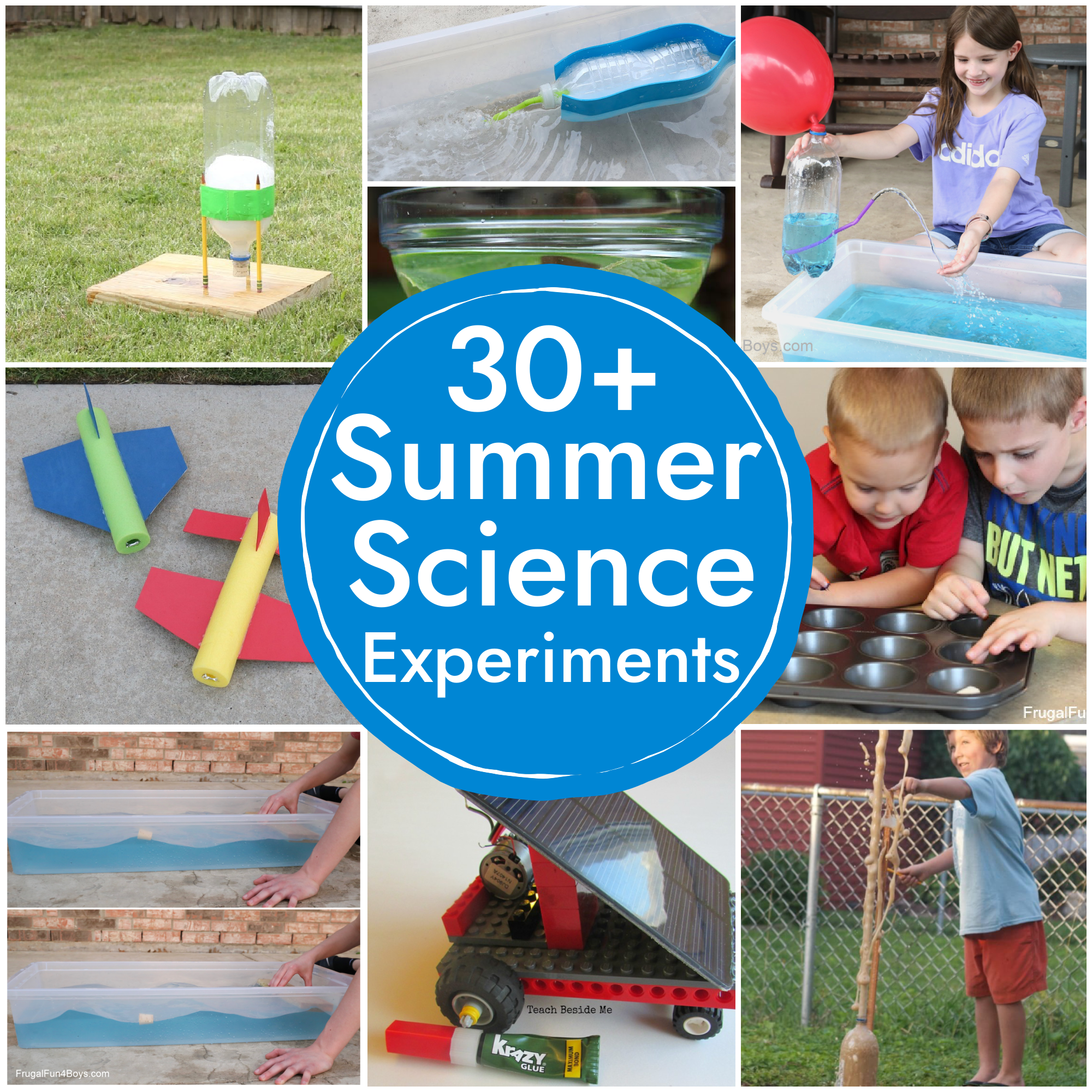Here are two science experiments about the sun! No, we won’t be LOOKING at the sun, but there are all kinds of cool (hot?) ways for kids to learn about the sun’s powerful rays.
These science experiments are fun to do in the summer, but they truly work any time of the year. All you need is a sunny day and a few other simple supplies.
This post contains Amazon affiliate links, which means that I earn from qualifying purchases at no additional cost to you.

Experiment #1: What Color Gets the Hottest in the Sun?
Supplies Needed:
- Mercury-free Thermometers – I bought this set of 20 on Amazon.
- White paper; black, blue, red, green, and yellow construction paper (you can choose other colors if you prefer)
The thermometers I linked to are very affordable, especially if you need enough for a class. The glass thermometer does slide back and forth inside the plastic frame, so it’s important to make sure that the red base of the thermometer is as far down as it can go before you take a temperature reading. Otherwise, your results may be a little off.
These are not the best thermometers ever. Some reviewers said that they melted in boiling water. If you’re needing something accurate and precise for high school experiments, I’d go with a more expensive thermometer. But if you’re looking for something affordable that will show temperature differences, these are a great option!
Step 1: Which gets hotter in the sun? Black or white paper?
Objects that appear white reflect all the colors of sunlight, while objects that appear black absorb all the colors of sunlight. If students know that, it will be obvious to them that black paper will be hotter since it absorbs more sunlight!
However, even if students are familiar with this concept, it’s still fun to quantify HOW much hotter black objects get. It’s impressive!
We put a piece of black paper and a piece of white paper in direct sun on our back porch. I made sure that both thermometers were reading the same temperature before putting them on the paper.

Want to know the results?
After 10 minutes, the thermometer on the black paper read 119 degrees.
The thermometer on the white paper read 112 degrees.
At the time, the air temperature was 97 degrees. So both papers got hotter in the sun, but the black one was definitely heated more!
This is why I don’t ever want to own a black (or dark colored car) in Texas!
I moved the papers and thermometers to a shady spot on our covered porch to test the temperature in the shade. The temperature on both thermometers read 90. I was surprised by that since the outside temperature was 97! Here’s why that happened… I really was measuring the temperature of the concrete on the porch, which had not yet heated up to match the air temperature.
Step 2: Do different colors have different temperatures?
The next afternoon, we repeated the experiment but used several different colors of paper!

I didn’t use EVERY possible color because I didn’t have that many thermometers. (We apparently lost a few during the school year!)
Here are our results:
- Black – 119 degrees F
- Blue – 116 degrees F
- Red – 112 degrees F
- Green – 114 degrees F
- Yellow – 112 degrees F
So now you know that when you’re out doing yard work in the heat, you’ll want to choose a white, yellow, or green shirt instead of black or blue!
I was surprised that red was also a “cool” color, but science backs that up.

Experiment #2: How can we focus light rays from the sun to create more heat?
It’s REALLY fun to use a magnifying glass to set things on fire, but that’s not exactly smart or safe. Here’s an alternative that demonstrates the same principle, but without harming anything!
A magnifying glass causes light rays to converge, or come together. Use converging rays to melt butter!
We did this experiment in early March, so the weather was cool. This activity was in our science book, Exploring Creation with Astronomy. We love this science series!
Step 1: Cut two slices of butter that are the same thickness. Set them in the sun.

If you can do this on a day where the air temperature is somewhere in the 50’s – 70’s Fahrenheit, you won’t notice visible melting while the butter just sits in the bowl.
But now let’s try the magnifying glass!
See that bright spot on the butter in the photo below? You want to position your magnifying glass so that the sun’s rays are focused right on the butter. It should then start melting quickly!
Adjust the magnifying glass so that the bright spot gets smaller. What happens now? It should melt the butter even faster!

Can you see the hole we melted in the butter? So fun!

Need more science ideas? We’ve got a whole collection of summer science experiments!
See them here: 30+ Summer Science Experiments for Kids


2 Comments
Tonya S Peters Jul 25, 2023
The butter melting. Does butter or margarine melt faster? That would be another experiment
Sue Jul 25, 2023
Great ideas. The colors and the temperatures that each registered was a new idea - thank you!
Post a Comment